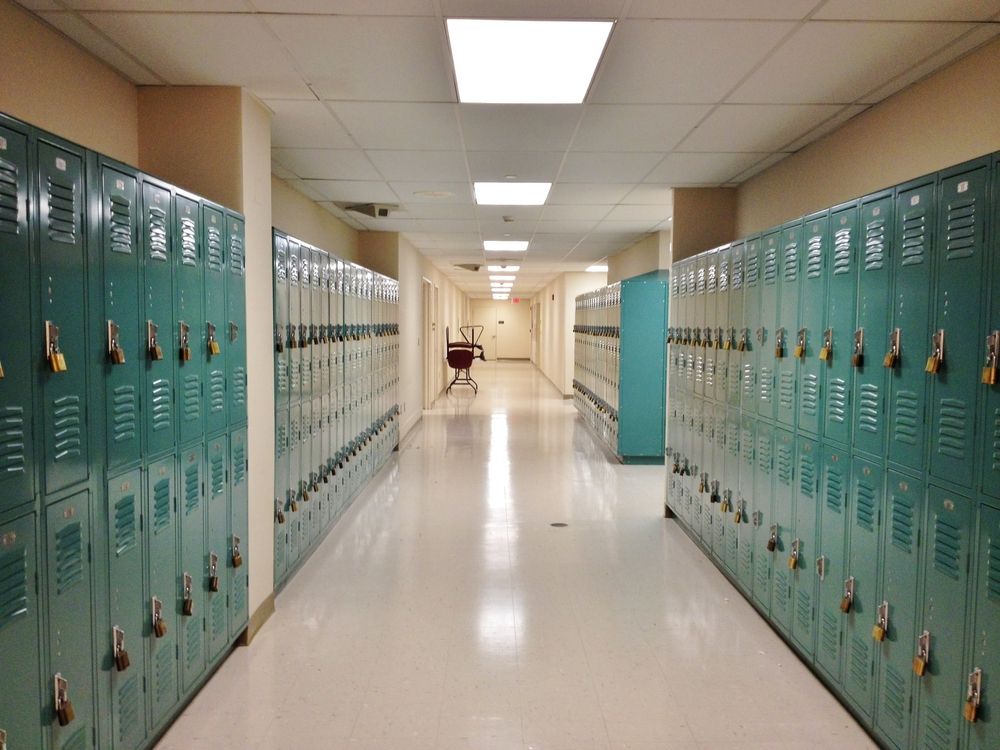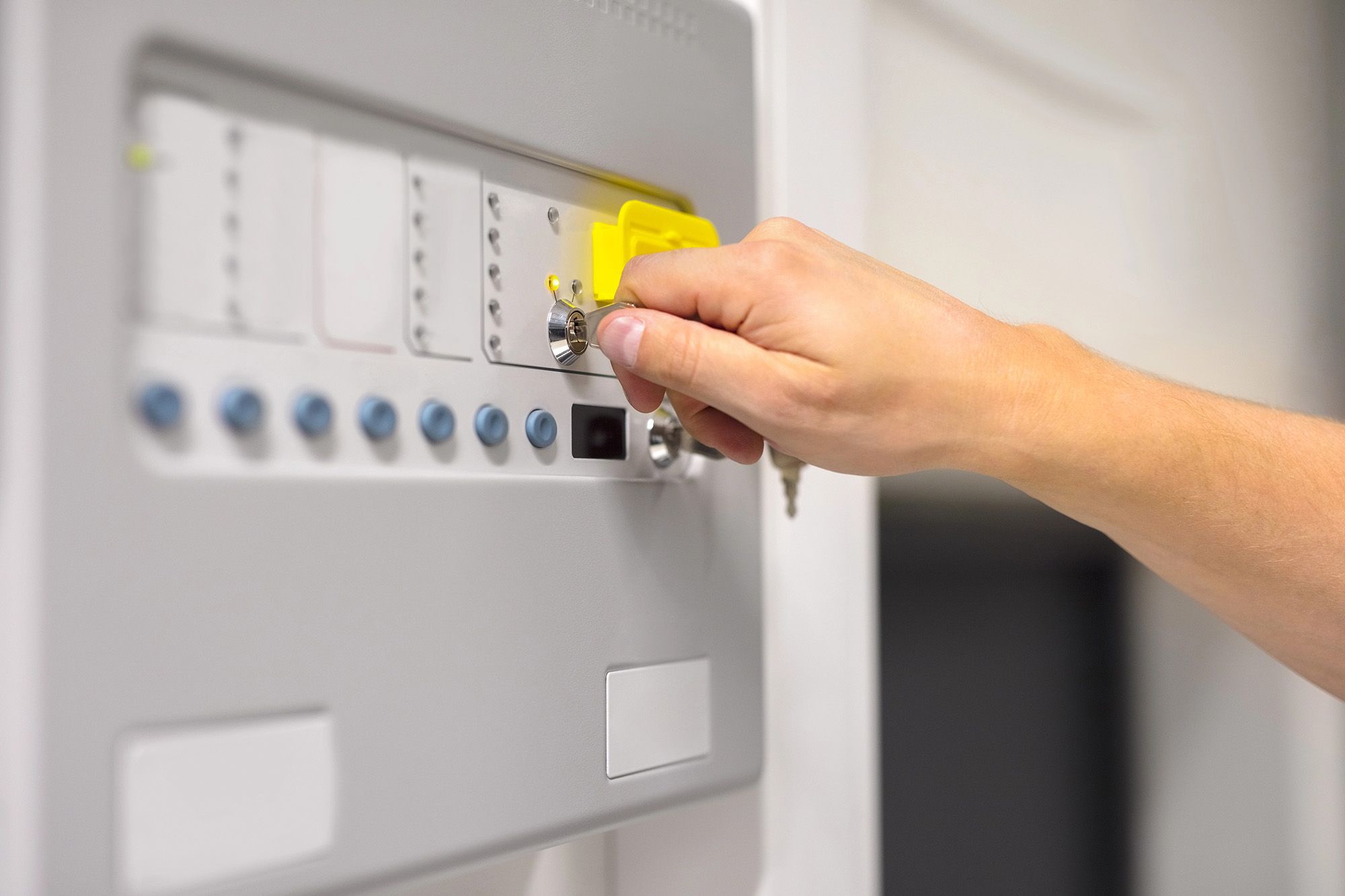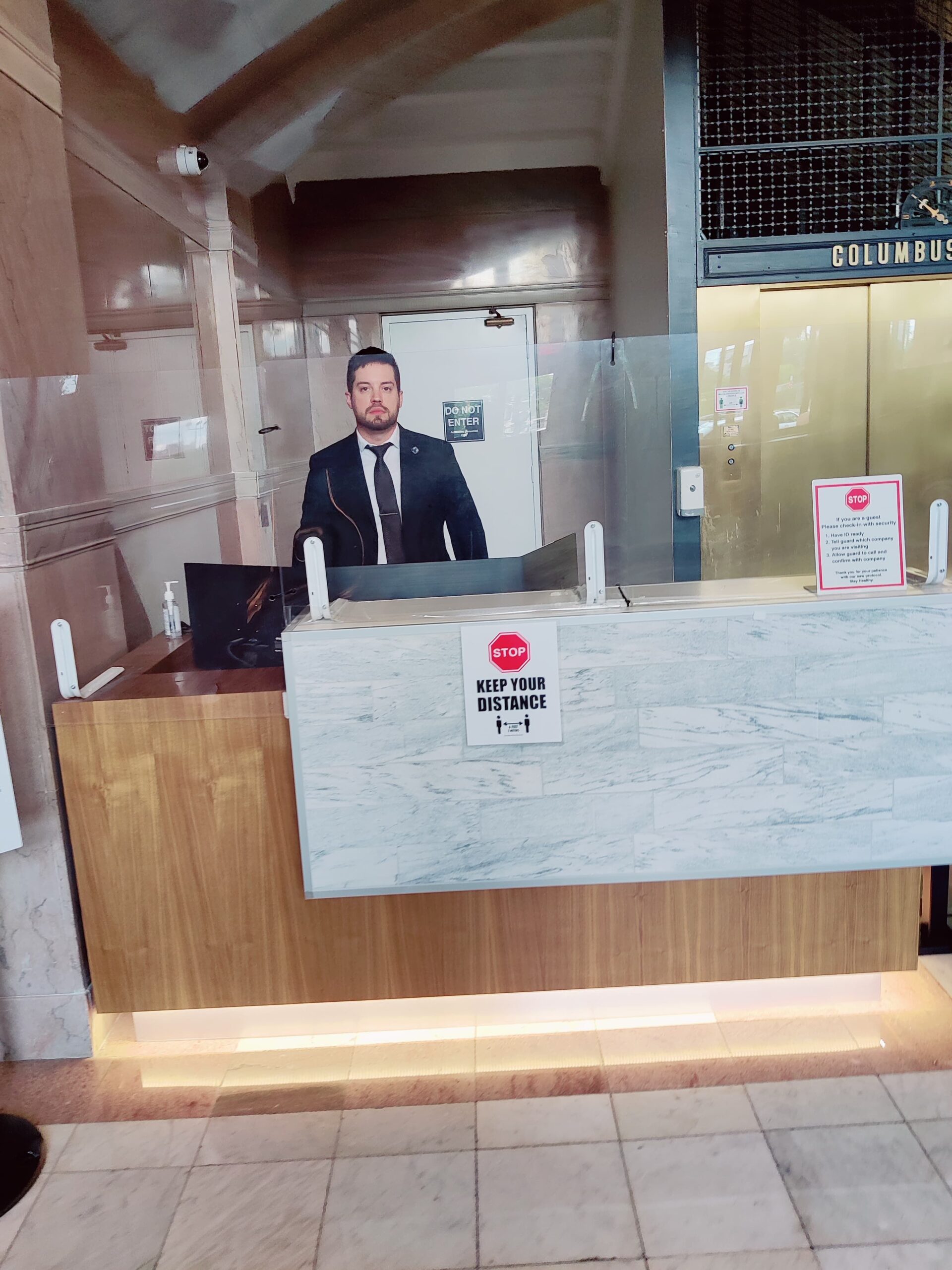Advanced Perimeter Intrusion Detection for Construction Sites in Boston
Construction sites across Boston face an escalating threat from theft, vandalism, and unauthorized access. With equipment theft costing the construction industry billions annually, site managers are turning to advanced perimeter intrusion detection systems that combine cutting-edge technology with human expertise to create impenetrable security barriers.
The High Stakes of Construction Site Security
Boston’s dense urban environment creates unique vulnerabilities for construction projects. Sites often contain hundreds of thousands of dollars worth of equipment, materials, and tools, making them prime targets for criminals. Traditional security measures like basic fencing and occasional patrols simply cannot provide the comprehensive protection modern construction sites require.
The financial impact extends beyond immediate theft losses. Project delays, insurance claims, and replacement costs can multiply the damage exponentially. Smart construction managers recognize that investing in advanced perimeter detection systems pays for itself through prevented losses and reduced insurance premiums.

Core Technologies Transforming Construction Site Security
AI-Powered Video Analytics
Modern perimeter detection systems utilize artificial intelligence to distinguish between legitimate activity and potential threats. These systems can:
- Identify human intrusion while filtering out false alarms from wildlife or weather
- Recognize specific behaviors like climbing, cutting, or loitering
- Track multiple targets simultaneously across large construction sites
- Generate instant alerts with visual verification
Thermal Imaging and Motion Detection
Advanced sensor networks create invisible security perimeters that work regardless of lighting conditions:
Key Capabilities:
- 24/7 detection in complete darkness
- Weather-resistant operation
- Precise intrusion location identification
- Integration with existing site lighting systems
Wireless Communication Networks
Construction sites benefit from wireless systems that adapt to changing site conditions:
- Easy relocation as construction progresses
- No vulnerable cables to cut or damage
- Encrypted communication channels
- Battery backup for uninterrupted operation
The Boston Advantage: Integrated Security Solutions
Massachusetts security regulations emphasize the importance of combining technology with qualified human oversight. The most effective construction site security integrates advanced detection systems with trained security professionals who can:
- Respond immediately to verified threats
- Coordinate with local law enforcement when necessary
- Provide detailed incident documentation for insurance and legal purposes
- Adapt security protocols based on real-time site conditions
This hybrid approach addresses a critical concern identified in client research: the need for both technological sophistication and human judgment in security operations.
Cost Analysis: Investment vs. Protection
Initial Equipment Costs

Construction sites typically see ROI within 6–12 months through:
- Theft prevention: Average construction site experiences $25,000-$100,000 in annual losses
- Insurance discounts: Up to 20% reduction in premiums for sites with advanced security
- Project timeline protection: Avoiding delays that can cost $1,000+ per day
- Reduced security guard costs: Technology can reduce required guard hours by 30–50%
Implementation Best Practices for Boston Construction Sites
Site Assessment and Customization
Every construction site requires a tailored security approach:
Critical Factors to Evaluate:
- Site perimeter length and terrain
- High-value equipment locations
- Access points and vulnerable areas
- Proximity to public areas and roads
- Construction timeline and changing layouts
Technology Integration Strategies
Successful implementations follow a systematic approach:
- Phase 1: Perimeter sensor installation
- Phase 2: Video analytics deployment
- Phase 3: Mobile monitoring integration
- Phase 4: Guard service coordination
Ongoing Monitoring and Maintenance
Advanced systems require professional oversight to maintain peak effectiveness:
- Regular system health checks
- Software updates and threat database refreshes
- Sensor cleaning and calibration
- Response protocol testing and refinement
Regulatory Compliance in Massachusetts
Boston construction sites must navigate specific state requirements for security operations:
Licensing Requirements
- Security technology providers must hold appropriate state licenses
- Armed response personnel require Massachusetts License to Carry (LTC)
- Company registration with Executive Office of Public Safety and Security
Insurance and Liability Protection
Comprehensive coverage should include:
- General liability for security operations
- Technology errors and omissions
- Workers’ compensation for security personnel
- Cyber liability for digital systems
Choosing Your Security Technology Partner
When evaluating perimeter intrusion detection providers, construction managers should prioritize:
Essential Qualifications:
- Proven experience with construction site security
- 24/7 monitoring capabilities
- Local response teams familiar with Boston area
- Comprehensive insurance coverage
- State licensing and regulatory compliance
Technology Standards:
- Real-time alert capabilities
- Mobile app access for site managers
- Integration with existing security systems
- Scalable solutions that adapt to project phases
The Future of Construction Site Security
Advanced perimeter intrusion detection represents the evolution from reactive to proactive security. By combining intelligent sensors, AI analytics, and human expertise, Boston construction sites can achieve unprecedented levels of protection while optimizing security budgets.
The investment in advanced perimeter detection systems pays dividends through prevented losses, reduced insurance costs, and protected project timelines. For construction managers serious about protecting their assets, the question isn’t whether to implement these systems, but how quickly they can be deployed.
Ready to secure your construction site? Contact qualified security professionals who understand Boston’s unique construction environment and can design a customized perimeter detection solution that protects your investment and keeps your project on schedule.
The combination of advanced technology and human expertise creates an unbeatable security solution that adapts to your construction site’s evolving needs while providing the peace of mind that comes from knowing your assets are protected around the clock.
Advanced Features and Emerging Technologies
Drone Integration for Aerial Surveillance
Leading-edge construction site security now incorporates autonomous drone patrols that complement ground-based perimeter systems:
Operational Advantages:
- Aerial perspective reveals blind spots in ground sensors
- Thermal imaging capabilities for night surveillance
- Automated flight paths with GPS precision
- Real-time video streaming to security command centers
- Rapid deployment to investigate perimeter breaches
Boston’s urban environment requires careful drone operation within FAA regulations, making professional security providers with proper certifications essential for legal compliance.
Smart Analytics and Predictive Security
Modern AI systems go beyond simple intrusion detection by analyzing patterns and predicting potential security risks:
- Behavioral analysis identifies suspicious activity before breaches occur
- Traffic pattern recognition distinguishes between authorized personnel and potential threats
- Temporal analysis flags unusual activity during off-hours
- Risk scoring prioritizes alerts based on threat severity
IoT Sensor Networks
Internet of Things (IoT) devices create comprehensive site awareness through interconnected sensors:

Managing False Alarms and System Optimization
Intelligent Filtering Systems
Advanced perimeter detection systems minimize false alarms through sophisticated algorithms:
Common False Alarm Sources:
- Weather conditions (rain, snow, wind)
- Wildlife movement
- Vegetation growth near sensors
- Construction vehicle movement during authorized hours
Mitigation Strategies:
- Machine learning algorithms that adapt to site-specific conditions
- Weather compensation features
- Customizable sensitivity settings for different zones
- Integration with construction schedules to reduce false positives
Response Protocol Optimization
Effective perimeter security requires carefully planned response procedures:
- Immediate Alert Verification — AI confirms genuine threats within seconds
- Graduated Response Levels — Different protocols for various threat types
- Law Enforcement Coordination — Direct communication channels with Boston Police
- Documentation Standards — Comprehensive incident reporting for legal/insurance purposes
Seasonal Considerations for Boston Construction Sites
Winter Weather Adaptations
Boston’s harsh winters demand robust security systems designed for extreme conditions:
Technical Requirements:
- Cold-weather rated equipment (-20°F operational range)
- Heated camera housings to prevent ice buildup
- Battery systems with cold-weather performance
- Snow load considerations for sensor mounting
Construction Season Security Scaling
Many Boston construction projects operate on seasonal schedules, requiring flexible security solutions:
- Hibernation modes for winter site protection
- Rapid deployment capabilities for spring construction startup
- Scalable monitoring that adjusts to varying site activity levels
- Equipment winterization services to protect detection systems
Industry-Specific Applications
High-Rise Construction Projects
Multi-story construction sites present unique perimeter challenges:
Specialized Solutions:
- Vertical perimeter detection for scaffold areas
- Crane-mounted surveillance systems
- Elevator shaft monitoring
- Rooftop access control integration
Infrastructure Projects
Highway, bridge, and utility construction requires extended perimeter coverage:
- Linear perimeter detection for miles of construction zones
- Mobile command centers for large-scale projects
- Traffic-aware sensors that distinguish construction from security threats
- Coordination with traffic management systems
Residential Development Security
Multi-building residential projects need comprehensive site protection:
- Phase-based security scaling as buildings are completed
- Model home protection with specialized access control
- Sales office integration with visitor management systems
- Landscape-friendly sensors that maintain aesthetic appeal
Training and Human Integration
Security Personnel Technology Training
Human guards require specialized training to maximize technology effectiveness:
Essential Training Components:
- System operation and troubleshooting
- Alert interpretation and response protocols
- Technology limitations and backup procedures
- Legal boundaries and reporting requirements
Site Manager Integration
Construction managers need user-friendly interfaces to monitor security status:
- Mobile dashboard access for real-time site monitoring
- Automated reporting for daily security summaries
- Alert customization based on management preferences
- Integration with project management software
Vendor Evaluation Checklist
When selecting an advanced perimeter intrusion detection provider for Boston construction sites, evaluate these critical factors:
Technical Capabilities
- 24/7 monitoring center operations
- Real-time mobile alerts and notifications
- Weather-resistant equipment ratings
- Scalable system architecture
- Integration with existing security infrastructure
Service Standards
- Local Boston area response teams
- Comprehensive training programs
- Preventive maintenance schedules
- Emergency support availability
- Performance metrics and reporting
Regulatory Compliance
- Massachusetts security business licensing
- Individual guard certifications
- Insurance coverage verification
- OSHA safety compliance
- Environmental protection protocols
ROI Calculation Framework
Quantifying Security Investment Returns
Construction managers can calculate precise ROI using this framework:
Cost Factors:
- Initial equipment investment
- Monthly monitoring fees
- Installation and setup costs
- Ongoing maintenance expenses
Benefit Calculations:
- Theft Prevention Value = Average annual losses × Prevention rate (typically 85–95%)
- Insurance Savings = Annual premium reduction × Policy term
- Project Protection = Daily delay costs × Days prevented
- Guard Cost Reduction = Hours reduced × Hourly rate savings
Sample ROI Calculation
For a $2M Boston construction project:

This represents a 58% first-year ROI, with subsequent years showing even stronger returns as equipment costs are amortized.
Implementation Timeline
Typical Deployment Schedule
Professional installation follows a structured timeline:
Week 1–2: Site Assessment and Planning
- Comprehensive security audit
- Technology specification development
- Permit acquisition and regulatory compliance
- Equipment ordering and logistics coordination
Week 3–4: Installation Phase
- Perimeter sensor deployment
- Camera system installation
- Communication network setup
- Control center configuration
Week 5–6: Testing and Optimization
- System integration testing
- False alarm threshold adjustment
- Response protocol training
- Performance verification and documentation
Maximizing Long-Term Value
System Evolution and Upgrades
Advanced perimeter detection systems should grow with construction projects:
- Modular expansion capabilities for site growth
- Technology refresh programs to maintain cutting-edge protection
- Integration readiness for future security innovations
- Data analytics for continuous security improvement
Performance Monitoring and Optimization
Ongoing system refinement ensures maximum effectiveness:
- Monthly performance reviews and adjustment
- Seasonal optimization for weather conditions
- Threat pattern analysis and response improvement
- Technology upgrade planning and implementation
The construction industry in Boston continues to face evolving security challenges, from sophisticated theft operations to vandalism and unauthorized access. Advanced perimeter intrusion detection systems provide the technological foundation for comprehensive site protection, but success depends on proper implementation, ongoing optimization, and integration with qualified security professionals who understand the unique demands of Boston’s construction environment.
By investing in these advanced systems, construction managers protect not only their immediate assets but also their project timelines, insurance rates, and professional reputations. The technology exists today to create virtually impenetrable construction site security — the question is whether you’re ready to implement it before the next incident occurs.
Advanced Integration Strategies
Smart City Integration and IoT Connectivity
Boston’s growing smart city infrastructure presents unique opportunities for construction site security integration:
Municipal System Connections:
- Integration with Boston’s traffic management systems for coordinated emergency response
- Connection to city-wide surveillance networks for enhanced coverage
- Coordination with municipal lighting systems for automated illumination during alerts
- Integration with emergency services dispatch systems for faster response times
Benefits of Smart City Integration:
- Reduced response times through automated emergency service notifications
- Enhanced situational awareness through multiple data sources
- Coordinated security efforts across multiple construction sites
- Access to city-wide threat intelligence and pattern recognition
Cloud-Based Security Management
Modern perimeter detection systems leverage cloud computing for enhanced capabilities:
Cloud Platform Advantages:
- Centralized monitoring of multiple construction sites
- Advanced analytics processing power for complex threat detection
- Automatic software updates and security patches
- Scalable storage for video evidence and incident documentation
- Remote access for project managers and security teams
Data Security Considerations:
- End-to-end encryption for all communications
- Compliance with Massachusetts data protection regulations
- Backup and disaster recovery protocols
- Access control and user authentication systems
Specialized Boston Construction Challenges
Historic District Requirements
Many Boston construction projects operate within historic districts, requiring specialized security approaches:
Regulatory Considerations:
- Visual impact restrictions on security equipment
- Historic preservation compliance for installations
- Specialized mounting solutions that protect historic structures
- Coordination with Boston Landmarks Commission requirements
Technical Solutions:
- Concealed sensor installations that maintain historic aesthetics
- Wireless systems that avoid structural modifications
- Camouflaged cameras and detection equipment
- Underground cable routing to preserve historic facades
Waterfront Construction Security
Boston’s extensive waterfront construction projects face unique perimeter challenges:
Maritime Security Factors:
- Water-based intrusion detection requirements
- Coordination with Coast Guard security protocols
- Tidal zone equipment protection
- Marine traffic interference mitigation
Specialized Equipment:
- Underwater motion detection systems
- Marine-rated camera housings and sensors
- Floating perimeter barriers with integrated detection
- Weather-resistant communication systems for marine environments
Transit System Proximity
Construction sites near MBTA lines require specialized security coordination:
Transit-Specific Considerations:
- Coordination with MBTA security operations
- Vibration-resistant sensor mounting for subway proximity
- Radio frequency coordination to avoid transit system interference
- Emergency protocol coordination with transit police
Advanced Threat Detection Capabilities
Behavioral Analytics and Pattern Recognition
Next-generation AI systems provide sophisticated threat assessment:
Advanced Detection Features:
- Facial recognition integration for known threat identification
- Vehicle license plate recognition and database comparison
- Crowd behavior analysis for large-scale threats
- Weapon detection through advanced image analysis
Pattern Recognition Capabilities:
- Historical incident analysis for predictive security
- Unusual activity pattern identification
- Coordinated attack detection across multiple entry points
- Time-based threat assessment based on construction schedules
Cybersecurity Integration
Modern construction sites face both physical and cyber threats requiring integrated protection:
Cyber-Physical Security Elements:
- Network security for IoT devices and sensors
- Secure communication protocols for all system components
- Regular security updates and vulnerability assessments
- Integration with construction site IT security systems
Threat Mitigation Strategies:
- Isolated security networks separate from construction systems
- Encrypted communications between all security components
- Regular penetration testing and vulnerability assessments
- Incident response plans for both physical and cyber threats
Environmental Considerations and Sustainability
Green Security Technology
Environmentally conscious construction projects require sustainable security solutions:
Eco-Friendly Options:
- Solar-powered sensor networks for remote site areas
- Energy-efficient LED lighting integration
- Recyclable equipment components and responsible disposal
- Carbon footprint reduction through optimized equipment placement
LEED Certification Support:
- Documentation support for green building certifications
- Energy consumption monitoring and reporting
- Integration with sustainable construction practices
- Environmental impact assessment and mitigation
Weather Resilience and Climate Adaptation
Boston’s changing climate patterns require adaptable security systems:
Climate-Resilient Features:
- Extreme weather event preparation and response
- Flood-resistant equipment installation options
- High-wind condition operational capabilities
- Temperature extreme operational specifications
Cost Optimization Strategies
Flexible Pricing Models
Advanced security providers offer various pricing structures to match construction project needs:
Pricing Options:

Shared Security Networks
Multiple construction sites can leverage shared infrastructure for cost efficiency:
Network Sharing Benefits:
- Reduced per-site monitoring costs
- Enhanced threat intelligence sharing
- Coordinated response capabilities
- Economies of scale for equipment procurement
Insurance Partnership Programs
Leading security providers offer insurance collaboration programs:
Insurance Integration Benefits:
- Direct billing to insurance providers for qualifying events
- Reduced premium rates through verified security measures
- Streamlined claims processing with documented security evidence
- Risk assessment support for insurance underwriting
Technology Roadmap and Future Developments
Emerging Technologies on the Horizon
The construction security industry continues to evolve with new technological capabilities:
Next-Generation Features:
- Artificial intelligence integration for predictive threat modeling
- Augmented reality interfaces for security system management
- Blockchain technology for immutable security event recording
- 5G network integration for enhanced real-time communications
Scalability Planning
Forward-thinking construction managers should consider future expansion capabilities:
Scalability Factors:
- Modular system architecture for easy expansion
- Integration readiness for emerging technologies
- Vendor roadmap alignment for long-term partnerships
- Investment protection through upgradeable platforms
Quality Assurance and Performance Metrics
Key Performance Indicators (KPIs)
Effective security systems require measurable performance standards:
Critical Metrics:
- Detection Accuracy Rate: Percentage of actual threats identified (target: >95%)
- False Alarm Rate: Non-threat alerts per week (target: <5)
- Response Time: Average time from detection to response (target: ❤ minutes)
- System Uptime: Operational availability percentage (target: >99.5%)
- Coverage Effectiveness: Percentage of perimeter monitored (target: 100%)
Continuous Improvement Processes
Leading security providers implement ongoing optimization programs:
Improvement Strategies:
- Monthly performance reviews with detailed analytics
- Quarterly system optimization and threshold adjustments
- Annual technology assessments and upgrade planning
- Continuous training updates for security personnel
Vendor Performance Management
Construction managers should establish clear performance standards:
Vendor Accountability Measures:
- Service level agreements with specific response times
- Performance penalties for system failures
- Regular performance reviews and improvement planning
- Clear escalation procedures for service issues
Legal and Regulatory Updates
Massachusetts Regulatory Changes
Stay current with evolving security regulations in Massachusetts:
Recent Regulatory Developments:
- Updated privacy requirements for security camera systems
- Enhanced background check requirements for security personnel
- New insurance coverage mandates for security service providers
- Environmental protection requirements for construction site operations
Federal Compliance Requirements
Construction sites may need to comply with federal security regulations:
Federal Considerations:
- Department of Homeland Security guidelines for critical infrastructure
- OSHA safety requirements for security equipment installation
- Federal privacy laws affecting video surveillance systems
- International Building Code security provisions
Implementation Success Stories
Case Study: Major Boston Infrastructure Project
A recent $50M infrastructure project implemented comprehensive perimeter detection with measurable results:
Project Specifications:
- 2.5-mile linear construction site
- 18-month project timeline
- High-value equipment concentration
- Urban environment with public access challenges
Security Implementation:
- 150 perimeter sensors with AI analytics
- 24/7 monitoring with local response teams
- Integration with city traffic management systems
- Mobile command center for large-scale coordination
Measured Results:
- Zero successful equipment theft incidents
- 95% reduction in vandalism compared to similar projects
- 15% insurance premium reduction
- Project completion on schedule without security-related delays
ROI Analysis: High-Rise Construction
A 40-story residential tower project demonstrated exceptional security ROI:
Investment Details:
- $45,000 initial security system investment
- $2,200 monthly monitoring and response costs
- 24-month construction timeline
Financial Benefits:
- $125,000 in prevented theft based on similar project losses
- $18,000 annual insurance premium reduction
- $30,000 savings from reduced security guard requirements
- Zero project delays from security incidents
Total ROI: 285% over the project timeline
Final Implementation Checklist
Before deploying advanced perimeter intrusion detection systems, construction managers should verify:
Pre-Implementation Requirements
- Comprehensive site security assessment completed
- Vendor licensing and insurance verification
- Integration planning with existing security measures
- Regulatory compliance confirmation
- Budget approval and financing arrangements
Installation Phase Verification
- Equipment installation quality control inspections
- System integration testing and verification
- Personnel training completion and certification
- Emergency response protocol testing
- Performance baseline establishment
Ongoing Operations Checklist
- Regular performance monitoring and reporting
- Preventive maintenance schedule adherence
- Technology update and upgrade planning
- Cost-benefit analysis and ROI tracking
- Continuous improvement implementation
Conclusion: The Strategic Imperative
Advanced perimeter intrusion detection systems represent more than just security technology — they’re strategic business tools that protect construction investments, maintain project schedules, and provide competitive advantages in Boston’s demanding construction market.
The convergence of artificial intelligence, IoT connectivity, and professional security expertise creates unprecedented protection capabilities. Construction managers who implement these systems proactively position their projects for success while those who rely on outdated security methods expose themselves to significant financial and operational risks.
The question facing Boston construction professionals isn’t whether to invest in advanced perimeter detection, but how quickly they can implement these systems to protect their current and future projects. With proven ROI, regulatory compliance benefits, and insurance advantages, advanced perimeter intrusion detection systems pay for themselves while providing invaluable peace of mind.
Take action today. The next security incident could derail your project timeline, exceed your budget, and damage your professional reputation. Advanced perimeter intrusion detection systems provide the technological foundation for comprehensive construction site protection, backed by the human expertise necessary to maximize system effectiveness.
Contact qualified security professionals at New England Security who understand Boston’s unique construction environment and can design customized perimeter detection solutions that adapt to your specific project requirements. Your construction site’s security is too important to leave to chance — invest in proven technology that protects your assets, your timeline, and your success.




